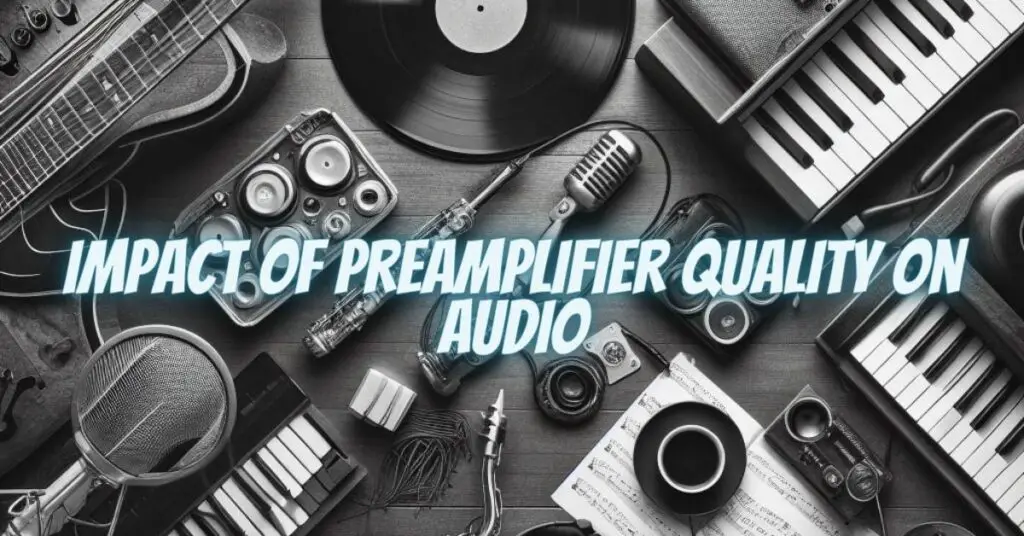Yes, the quality of a preamp can affect the sound of your audio recordings and playback. A good preamp can amplify the signal from your microphone or other audio source without adding any unwanted noise or distortion. It will also have a wide frequency response, so that it can accurately capture the full range of your audio source’s sound.
A poor preamp, on the other hand, may add noise and distortion to your signal, and it may not have a wide enough frequency response to accurately capture the full range of your audio source’s sound. This can result in a loss of sound quality in your recordings and playback.
How does a preamp affect sound?
A preamp affects the sound of your audio in a number of ways, including:
- Gain: The gain of a preamp controls how much it amplifies the input signal. A good preamp will have a wide gain range, so that it can be used with a variety of different audio sources.
- Frequency response: The frequency response of a preamp is the range of frequencies that it can accurately amplify. A good preamp will have a wide frequency response, so that it can accurately capture the full range of your audio source’s sound.
- Noise level: The noise level of a preamp is the amount of noise that it adds to the signal. A good preamp will have a low noise level, so that your recordings are as clean and noise-free as possible.
- Input and output impedance: The input and output impedance of a preamp is the electrical resistance that it presents to the signal. It is important to match the input and output impedance of your preamp to the input and output impedance of your microphone and audio interface.
When does the quality of a preamp matter most?
The quality of a preamp matters most when you are recording high-quality microphones and instruments. If you are using a cheap microphone, then the quality of your preamp is not as important. However, if you are using a high-quality microphone, then investing in a good preamp will make a big difference in the sound of your recordings.
How to choose a preamp
When choosing a preamp, there are a few factors to keep in mind:
- Frequency response: The frequency response of a preamp is the range of frequencies that it can accurately amplify. A good preamp will have a wide frequency response, so that it can accurately capture the full range of your microphone’s sound.
- Gain range: The gain range of a preamp is the amount of amplification that it can provide. A good preamp will have a wide gain range, so that it can be used with a variety of different microphones.
- Noise level: The noise level of a preamp is the amount of noise that it adds to the signal. A good preamp will have a low noise level, so that your recordings are as clean and noise-free as possible.
- Input and output impedance: The input and output impedance of a preamp is the electrical resistance that it presents to the signal. It is important to match the input and output impedance of your preamp to the input and output impedance of your microphone and audio interface.
The quality of a preamp can have a significant impact on the sound of your audio recordings and playback. If you are recording high-quality microphones and instruments, then investing in a good preamp is a wise decision. When choosing a preamp, be sure to consider the frequency response, gain range, noise level, and input and output impedance.


